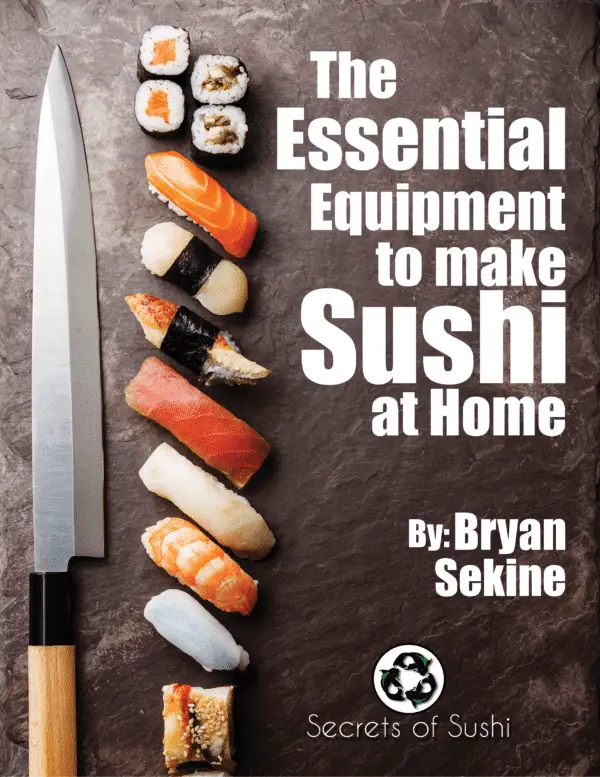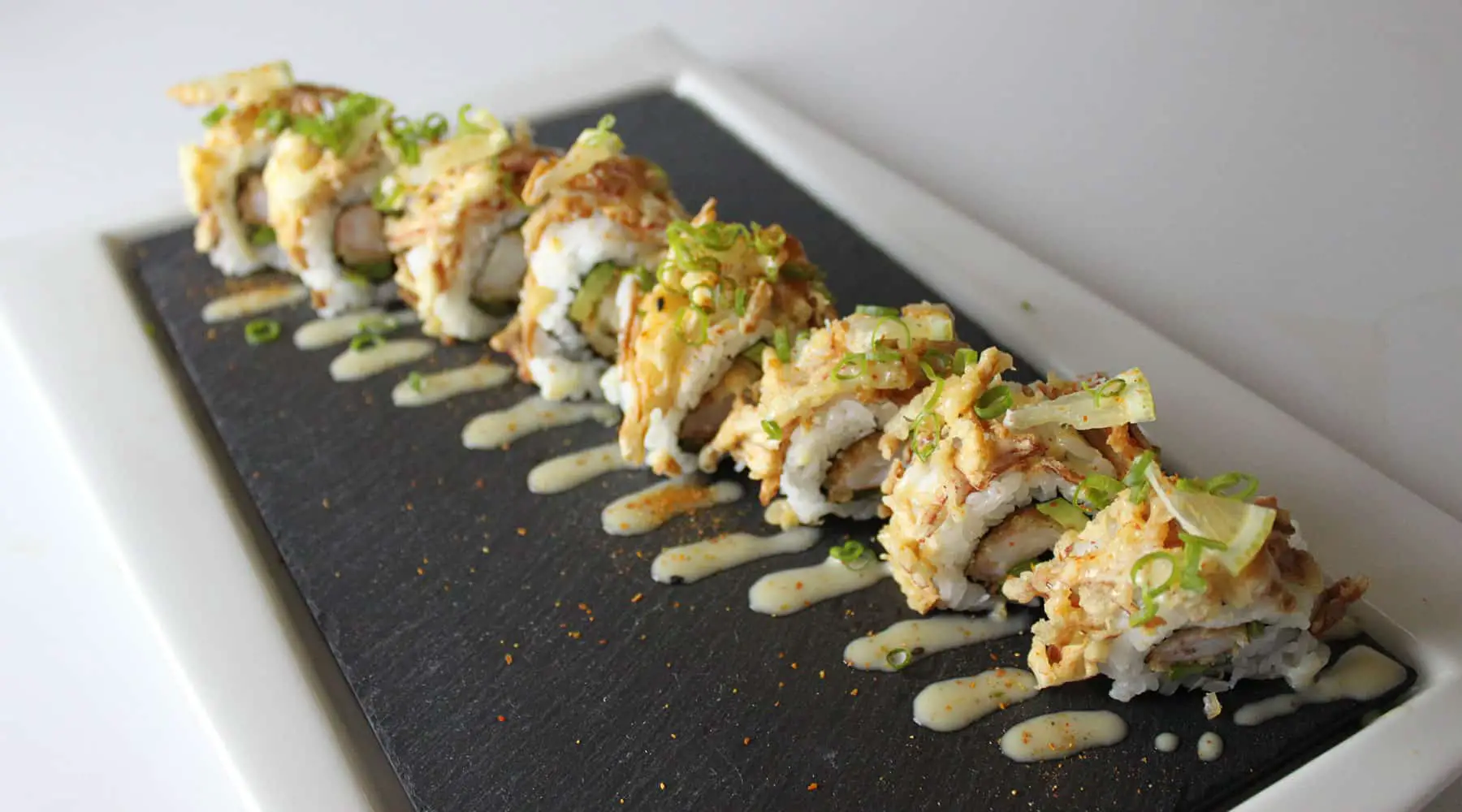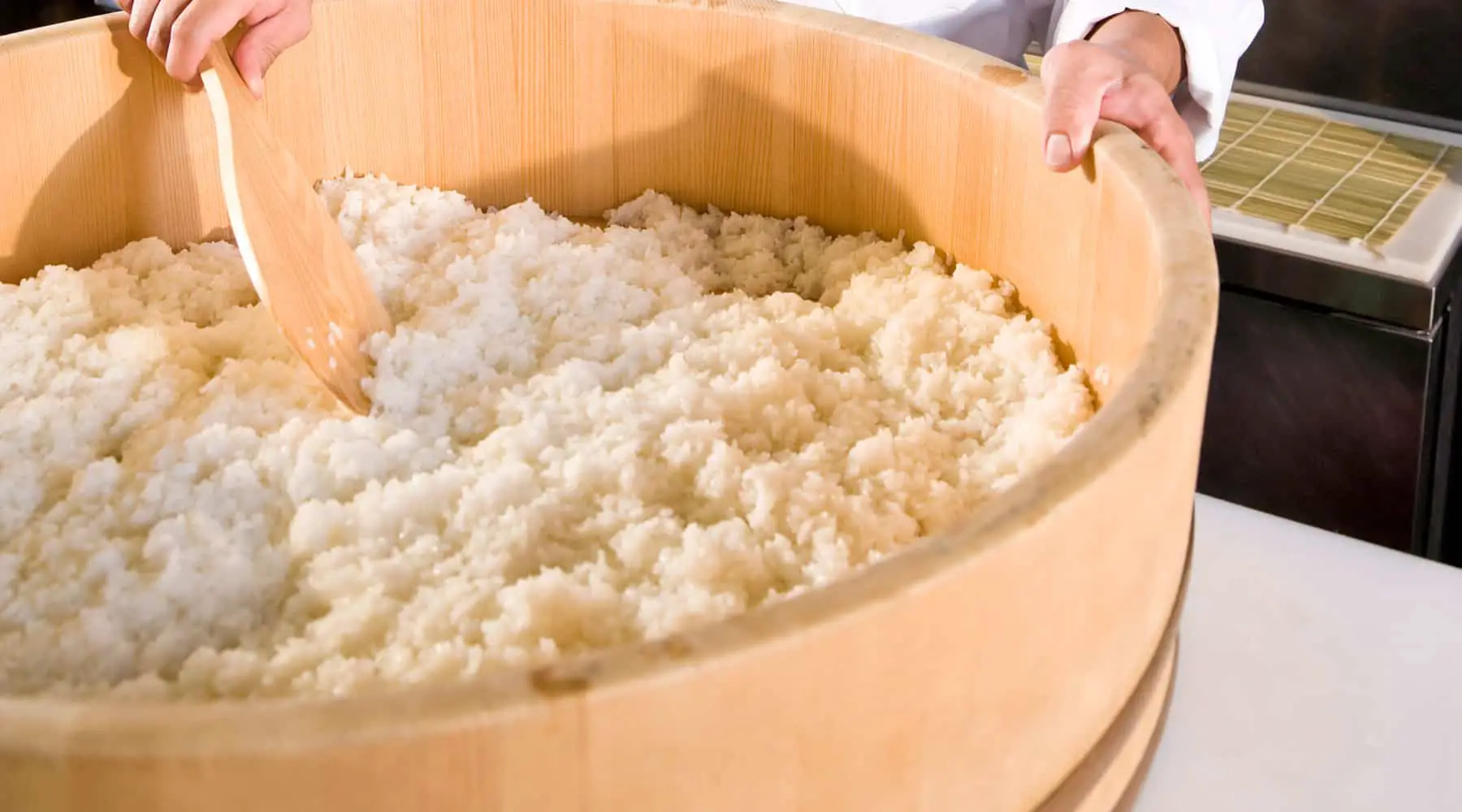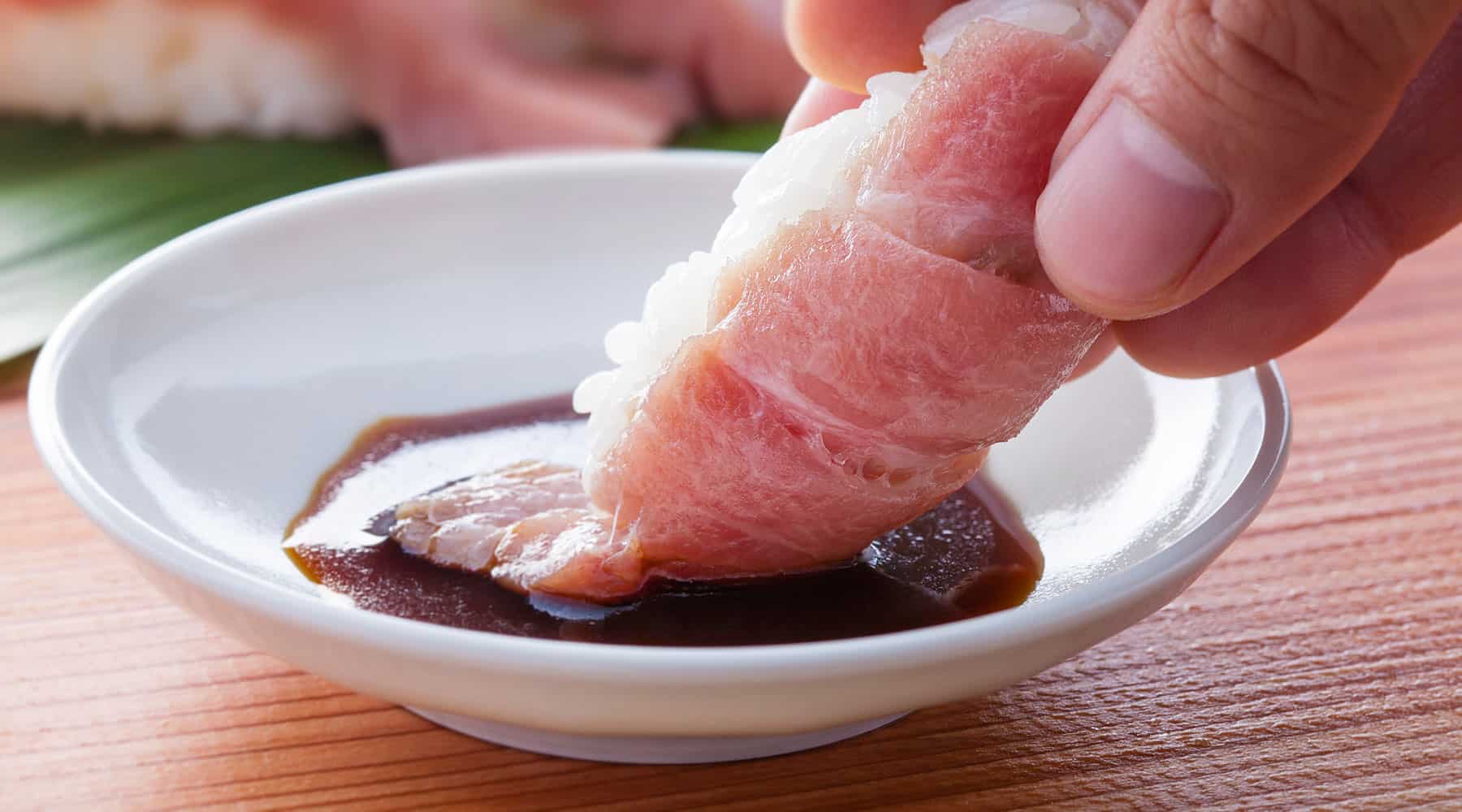Santoku
The Santoku, or the three virtues, is not actually a knife used in many sushi bars. This blade is handcrafted with the intent to be a well-rounded, Eastern version of the standard chef’s knife. The “three virtues” are slicing, mincing, and dicing. It’s a perfect addition to every home, but many sushi chefs prefer to have a particular knife for each particular job.
These knives have a very unique shape to them: they are mostly straight, with a sharp (usually about 60 degrees) curve towards the tip. They also tend to be thicker at the handle and thinner at the tip.
Unlike Western knives, which use a rocking motion, the Eastern variation is made to use more of a chopping motion- going from heel to tip.
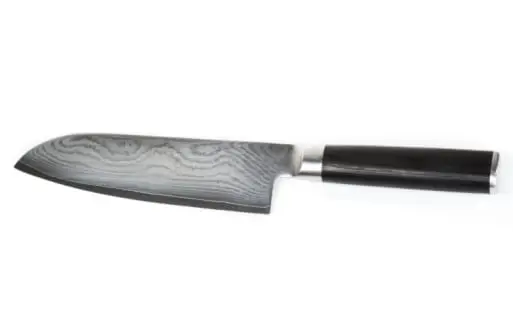
The Santoku is not a “traditional” sushi knife, rather a more modern addition to the Japanese kitchen. In fact, it is rumored that this knife was actually created in 1920! It’s not uncommon to see several different variations of this knife. Typically, these blades are made of stainless steel and have unique “scallops” or recesses carved out of each side of the blade. These scallops are intended to make slicing easier by allowing air pockets to push the food off of the blade while you work (results vary).
Should I buy a Santoku?
That’s a great question- one that I ask myself all the time. Personally, I would rather own several different knives than just one. But I know several chefs that prefer to go with the more minimalist approach.
It all really depends on what your intentions are with the knives. If you want to go for a more professional career, you will need multiple knives anyway. If you want to keep it casual, then the Santoku can be a great foundation for your base cutlery.
expensive VS. cheap - What's the difference?
Expensive: These knives are hand-made, folded, laminated, high-carbon steel. They are intended to be the best of the best. The folded steel will improve the hardness of the blade’s edge and increase rust resistance.
These versions are considered more “traditional” because they utilize the founding techniques of other Japanese blades. However, the more expensive versions will never have scalloped sides. NEVER put and handcrafted knife in the dishwasher.
Inexpensive: Easy to find, easier to clean, and (arguably) easier to use. These versions will vary wildly from one brand to the next. The knife’s shape, curved edge, scallops, handle, and materials used to create it are all variables to consider when buying one of these knives. Different versions are made to fit different users- make sure you know what qualities you are looking for before investing in any knife!
Avoid any variation with holes going completely through the blade (this might seem like common sense, but the scallops should NOT go all the way through). These are okay to wash in the dishwasher, provided that the manufacturers advocate it.


